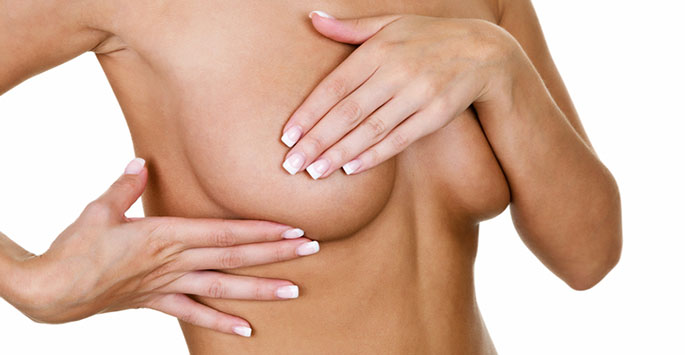
A breast lift procedure is very similar to a breast reduction, both of which are performed on an outpatient basis. Both procedures are done to offer direct relief from legitimate medical problems that are attendant to overlarge or saggy breasts, as well as an immediate cosmetic enhancement in women whose breasts are unbecoming due to their size. These procedures allow a woman to have her breasts reconfigured so that they are in natural proportion with the rest of her body.
Some women experience extensive enlargement of their breasts during pregnancy, which subsequently subsides following delivery. In addition to the postpartum loss of fat tissue, swelling can cause the skin to stretch and sag. Genetics and fluctuations in weight can also contribute to this condition, known medically as “ptosis”. No amount of exercise will re-tighten this skin. A breast lift will remove excess skin, raise the position of the nipple and areola and reduce sagging.
A breast lift surgery is performed to correct a number of problems that can occur when breasts do not hold their own weight and shape, including:
Breast lift, or mastopexy, can also be performed to correct tuberous breast deformity, also known as constricted breast deformity. This condition refers to a situation in which a portion of the breasts is underdeveloped. Typically this applies to the lower half of the breast, which has not grown commensurate with the remainder of the breast. As a result, the nipple-areolar complex and upper portion of the breast is misshapen. This can occur in varying degrees, and the method of correction will depend largely upon the severity.
The type of incision largely depends upon specific case circumstances, such as degree of enlargement or sagging. Incision options typically include the following:
Drains: Some patients will have drains in each breast for a few days after breast lift surgery to allow for the discharge of excess fluid. They are typically removed within the first week.
Swelling & bruising: You may experience bruising and swelling in the area for the first few days following your surgery. You can reduce this by taking bromelain and arnica montana. Any swelling and bruising will fully subside within a month following breast lift surgery.
Dressings: You should keep your dressings dry and intact. At your first post-operative visit, your dressings will be taken out and you will be placed into a wireless sports bra or surgical bra. We recommend getting fitted for this before receiving your surgery.
Pain management: You will be under long-lasting local anesthesia during your procedure, which will keep you comfortable for most of the first day. After that, oral pain medication can be taken to control any discomfort. Dr. Varkarakis usually prescribes Vicodan or Percocet in addition to a muscle relaxant, such as Valium.
Note on showering: It is important you keep your breast dressings dry and intact. Dr. Varkarakis will provide instructions on showering and dressings so as to ensure an uninterrupted healing process.
Follow-ups: You will be scheduled for follow-up appointments. Make sure you ask any questions you have to Dr. Varkarakis or his staff. It is common for him to see patients the day after surgery, the week after and then at gradually longer intervals. Some patients may need additional requirements.
While a breast lift is very effective in raising the breasts to reduce sagging, it will not add volume. For this reason, it is common for women who are unsatisfied with their breast size to receive a breast augmentation concurrent to a breast lift. In this combination of procedures, the breast implant is placed before the lift is performed. In this way, Dr. Varkarakis can ensure the skin is not too tight to accommodate the new volume that is supplied by the implant. A breast lift with augmentation is one of the most popular methods for women to enhance their appearance, and Dr. Varkarakis has a reputation for delivering the finest breast lift Miami has to offer.